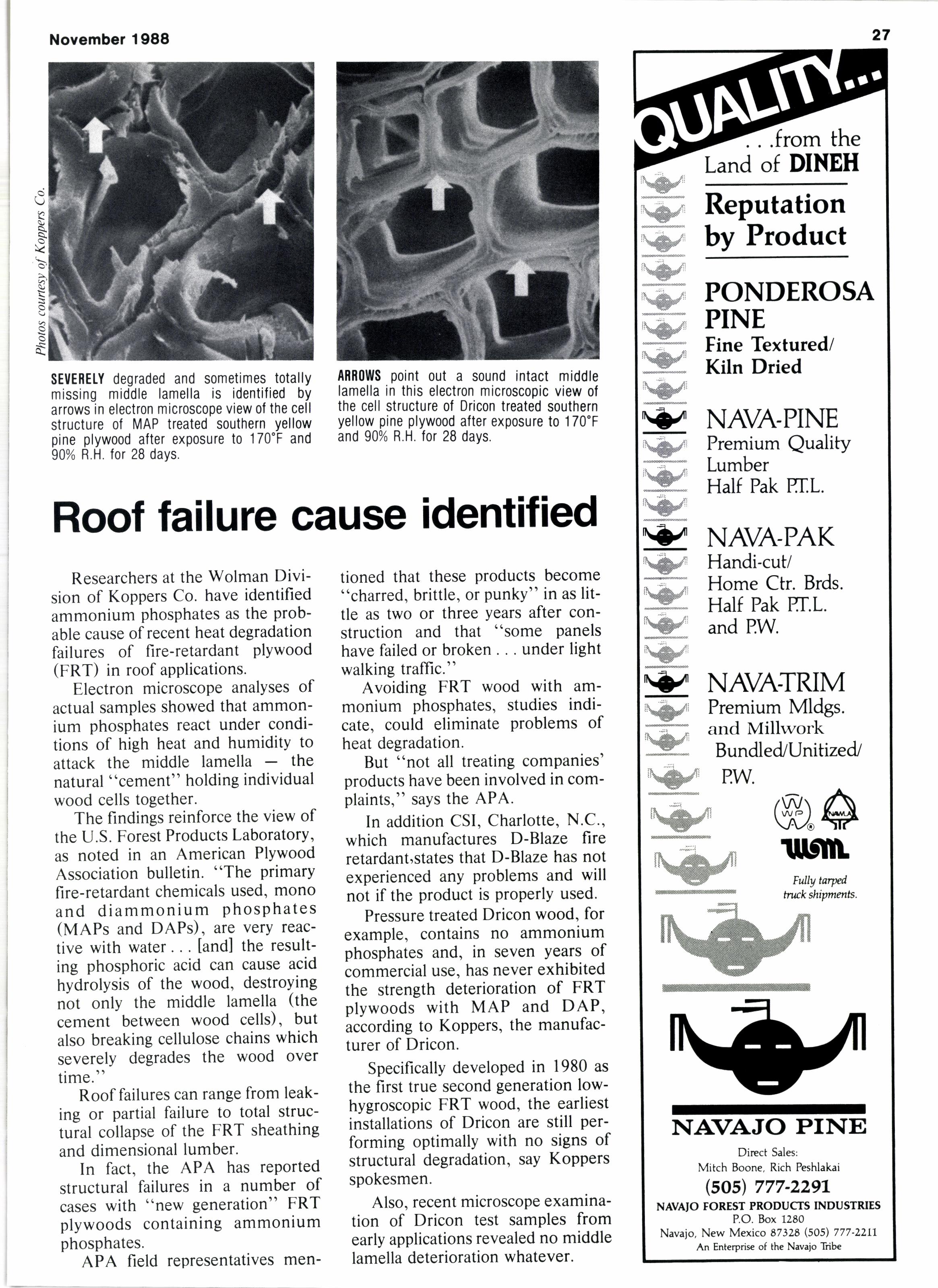
1 minute read
Roof failure cause identified
Researchers at the Wolman Division of Koppers Co. have identified ammonium phosphates as the Probable cause ofrecent heat degradation failures of fire-retardant plywood (FRT) in roof applications.
Electron microscoPe analYses of actual samples showed that ammonium phosphates react under conditions of high heat and humiditY to attack the middle lamellathe natural "cement" holding individual wood cells together.
The findings reinforce the view of the U.S. Forest Products Laboratory, as noted in an American PlYwood Association bulletin. "The primary fire-retardant chemicals used, mono and diammonium Phosphates (VRPs and DAPs), are very reactive with water. [and] the resulting phosphoric acid can cause acid hydrolysis of the wood, destroYing not only the middle lamella (the cement between wood cells), but also breaking cellulose chains which severely degrades the wood over time."
Roof failures can range from leaking or partial failure to total structural collapse of the FRT sheathing and dimensional lumber.
In fact, the APA has rePorted structural failures in a number of cases with "new generation" FRT plywoods containing ammonium phosphates.
tioned that these Products become "charred. brittle, or punky" in as little as two or three Years after construction and that "some Panels have failed or broken under light walking trafftc."
Avoiding FRT wood with ammonium phosphates, studies indicate. could eliminate problems of heat degradation.
But "not all treating comPanies' products have been involved in complaints," says the APA.
In addition CSI, Charlotte, N.C., which manufactures D-Blaze fire retardant'states that D-Blaze has not experienced any problems and will not if the product is properly used.
Pressure treated Dricon wood, for example, contains no ammonium phosphates and, in seven Years of commercial use, has never exhibited the strength deterioration of FRT plywoods with MAP and DAP, according to Koppers, the manufacturer of Dricon.
Specifically developed in 1980 as the first true second generation lowhygroscopic FRT wood, the earliest installations of Dricon are still performing optimally with no signs of structural degradation, say Koppers spokesmen.
Also, recent microscoPe examination of Dricon test samPles from early applications revealed no middle lamella deterioration whatever.
PONDEROSA PINE
Fine Textured/ Kiln Dried
NAVA.PINE
Premium Quality Lumber
Half Pak PTL.
NAVA-PAK
Handi-cut/ Home Ctr. Brds. Half Pak PLL. and P.W.
NAVATRIM Premium Mldgs. and Millwork
Land of DINEH "ry.4#" Reputation W. by Product 'wf K{: wfl Ktr: W: \a/ w{ \M \a/ 3$M w w w \a/ 1#{r Yffi{
Bundled/Unitized/ PW.
(D.4 1tt6ilt










